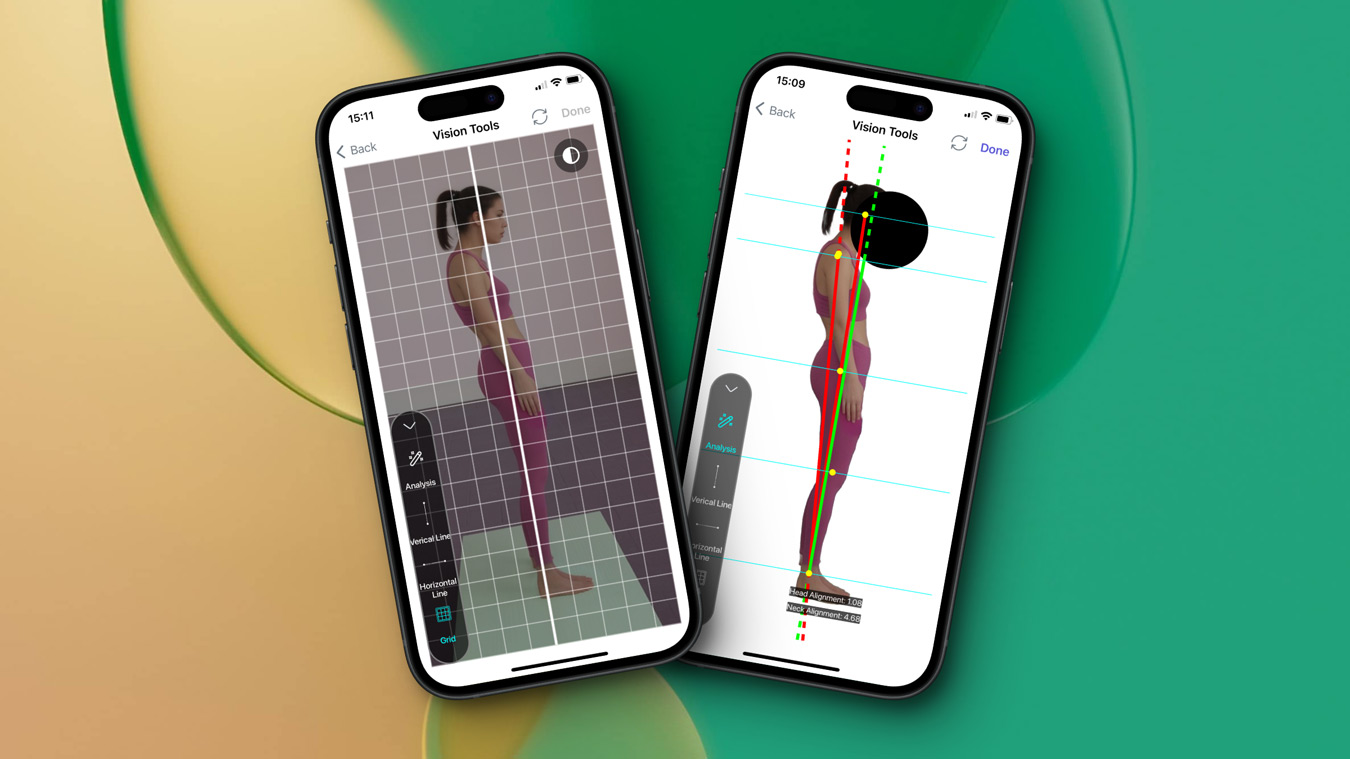
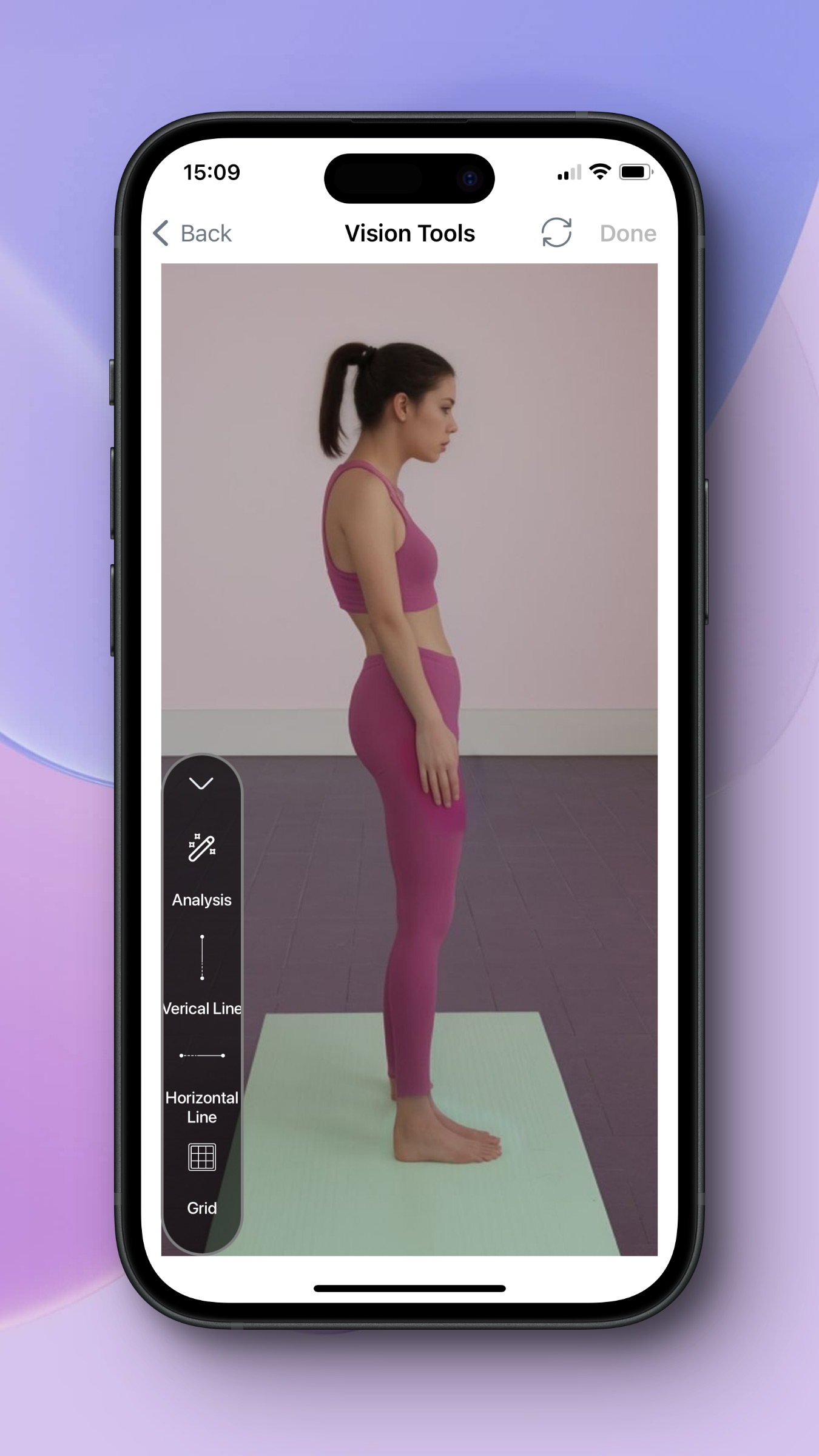
Choose posture analysis and upload a photo or take a picture of your subject.
Select the analysis and see alignment results of shoulders, hips, knees, ankles, and all body.
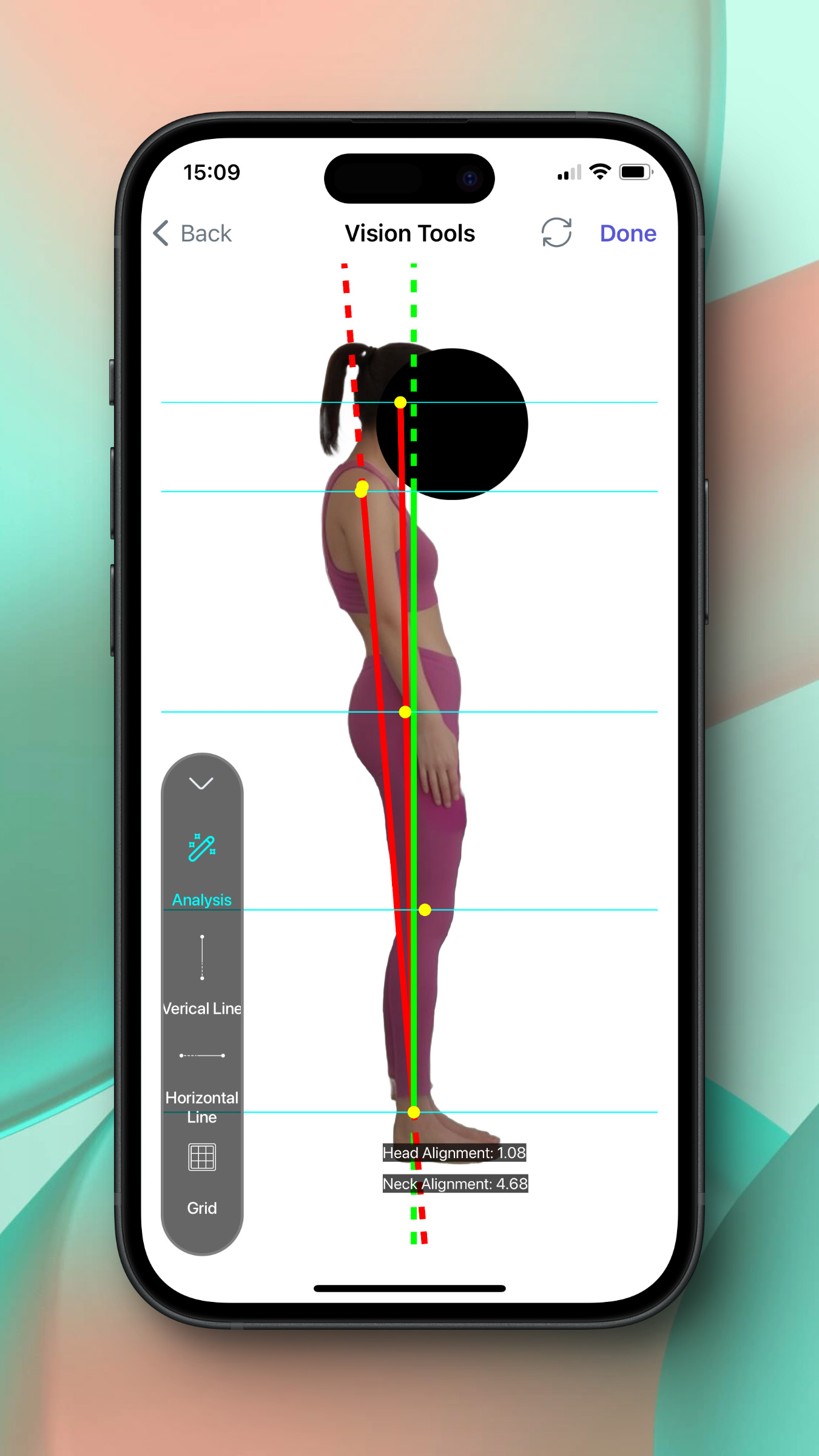
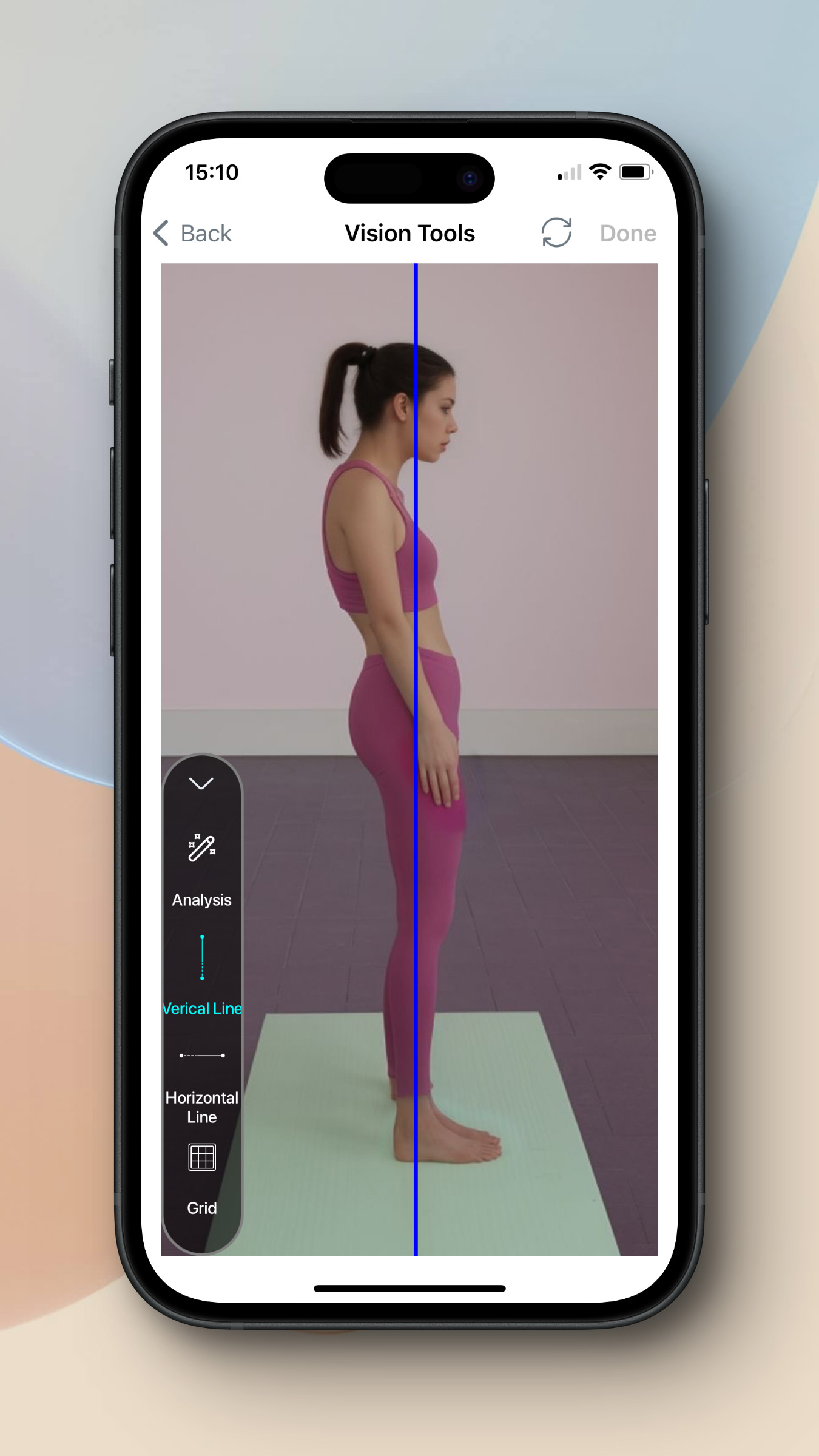
In sway back, the body leans backward and you can check it by adding a vertical line on the spine and hip.
For more details add grid. After seeing the results you can share them as a PDF with any social media.
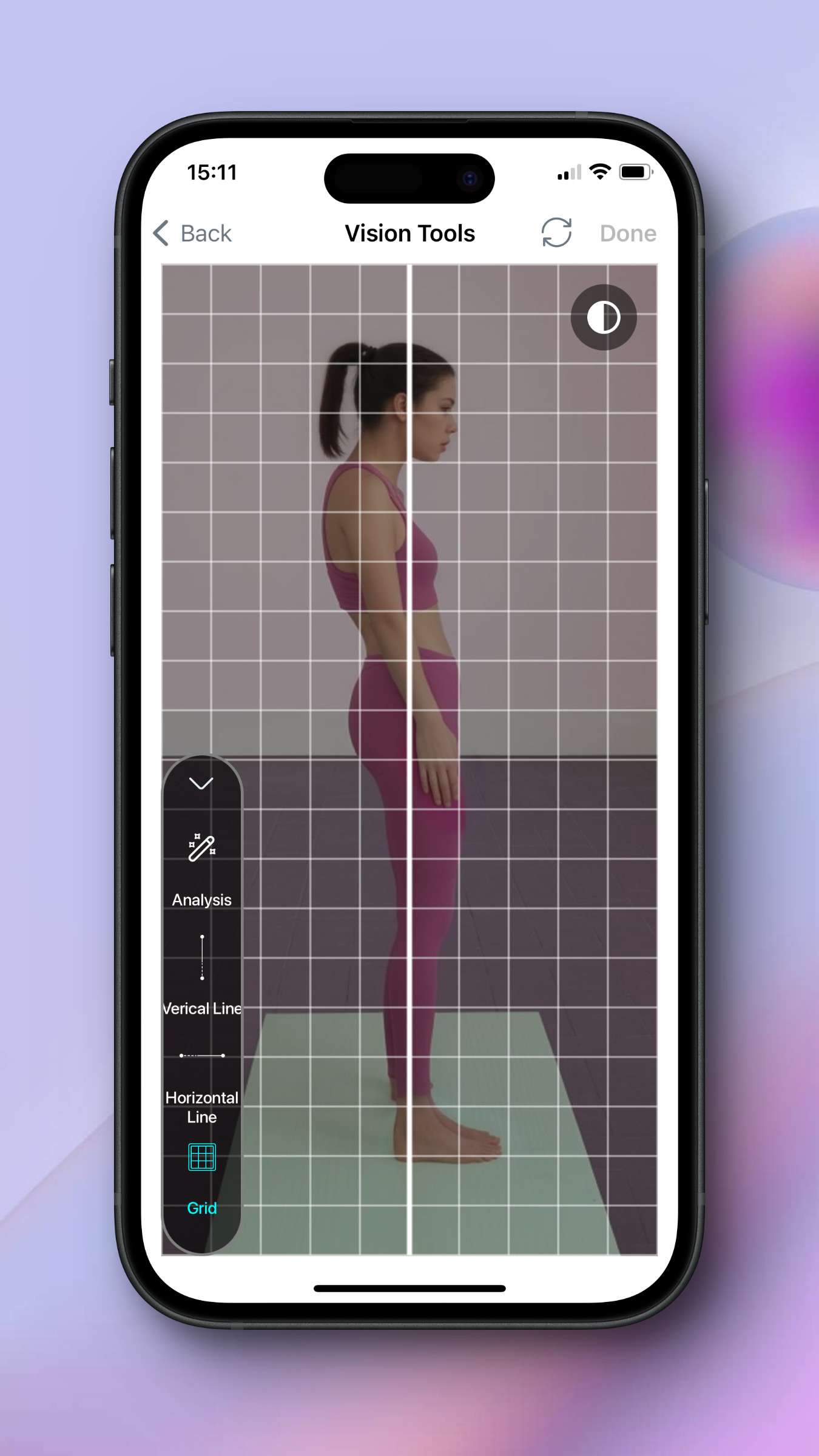
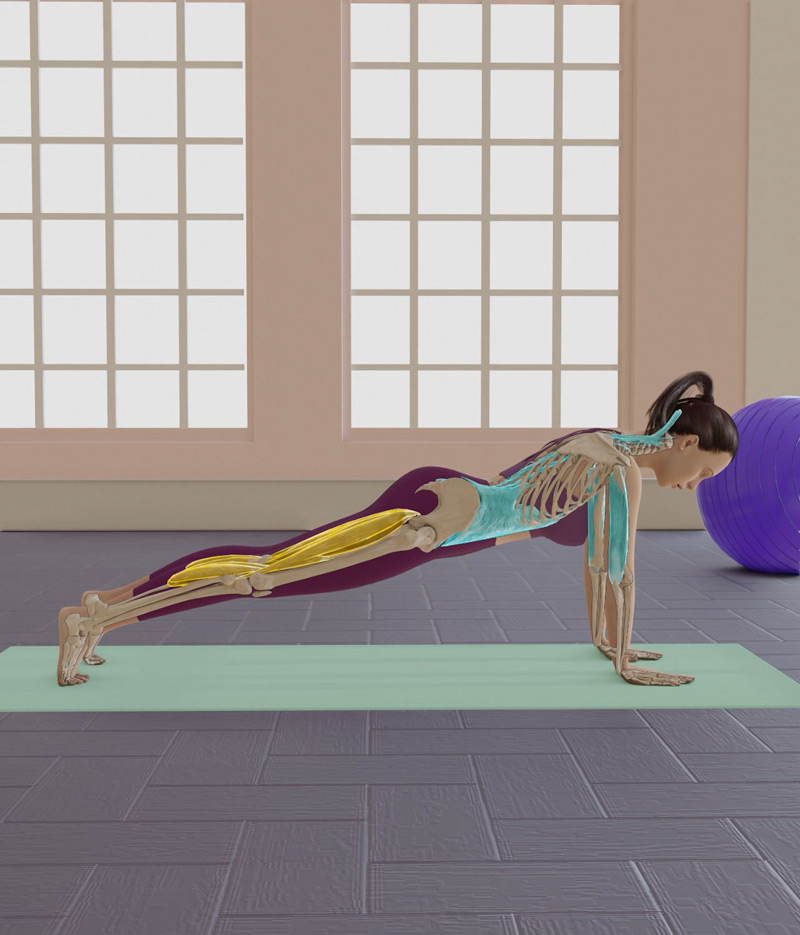
Engage core, back straight, arms locked, squeeze glutes and hold for 15-20 seconds..
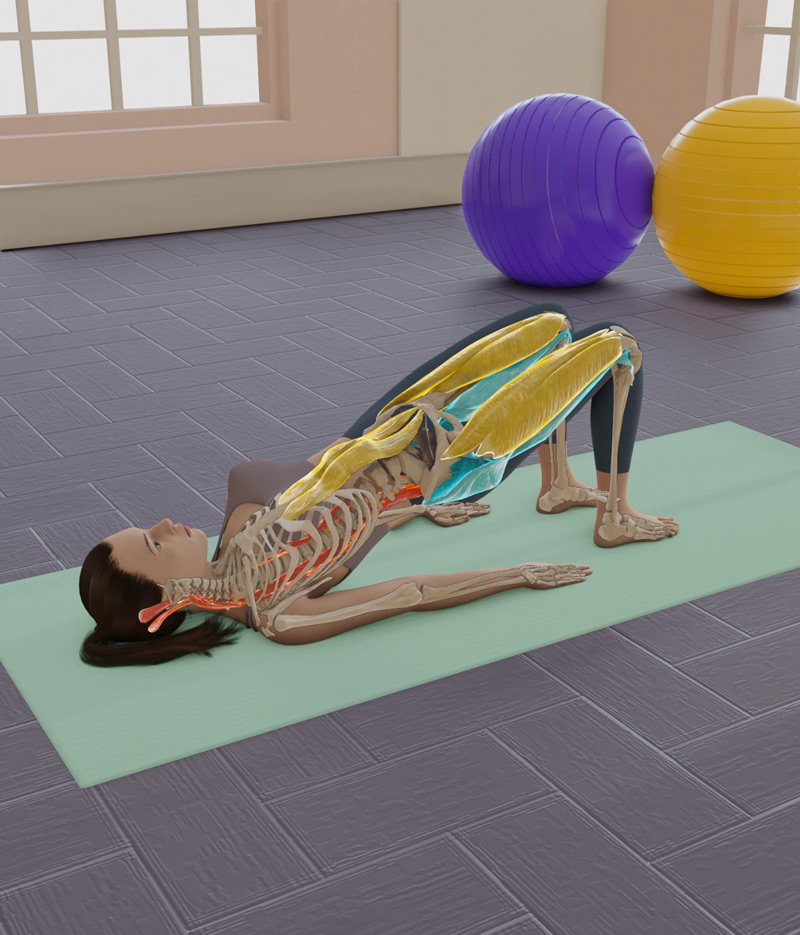
Lie down, knees bent, lift hips, squeeze shoulder blades, hold 15 seconds, repeat 10 times.

On forearms, tuck toes under, lift hips up, engage core, hold for 30-60 seconds.
Sway Back Posture in Adults: A Guide for Fitness and
Bodybuilding Coaches
Mild Sway Back:
• Characteristics: More noticeable posterior pelvic tilt and lumbar flattening, visible
thoracic kyphosis, and forward head posture.
• Biomechanical Implications: Minor changes in spinal loading and lower limb
biomechanics.
• Coaching Approach: Focus on preventive strategies like postural education and exercises
to correct muscle imbalances. Include stretching for tight hamstrings and strengthening the abdominal and
lumbar extensor muscles.
Moderate Sway Back:
• Characteristics: More noticeable posterior pelvic tilt and lumbar flattening, visible
thoracic kyphosis, and forward head posture.
• Biomechanical Implications: Altered spinal alignment leads to less efficient
biomechanical loading patterns.
• Coaching Approach: Implement a comprehensive exercise program targeting core
stabilization, pelvic alignment, and postural retraining. Consider incorporating manual therapy techniques
and ergonomic advice to address contributing factors.
Severe Sway Back:
• Characteristics: Marked pelvic displacement with significant lumbar spine flattening,
pronounced thoracic kyphosis, and forward head posture.
• Biomechanical Implications: Major impact on overall postural balance and spinal
biomechanics.
• Coaching Approach: Develop an intensive, multifaceted rehabilitation program. Focus on
advanced strengthening, and neuromuscular retraining, including proprioceptive and balance exercises.
Collaborate with healthcare professionals for a multidisciplinary approach.
Critical Sway Back:
• Characteristics: Extreme postural deviation with significant functional
limitations.
• Biomechanical Implications: Profound alterations in spinal and pelvic biomechanics,
potentially affecting overall movement efficiency and systemic health.
• Coaching Approach: Create a highly individualized treatment plan, integrating various
therapeutic modalities. Focus on long-term management for functional improvement and quality of life.
Consider referrals to specialists for comprehensive evaluation and management.
In each category, the approach should focus on understanding the severity of sway back posture and tailoring
interventions to effectively manage and correct the condition. As severity increases, the focus shifts from
primarily corrective exercises to more comprehensive management, including pain relief and functional
rehabilitation.
Conclusion:
Sway back posture showcases varying levels of severity, each demanding specific attention:
In mild cases, minor pelvic displacement warrants focus on education and muscle balance correction. For
moderate cases, noticeable tilt calls for exercises enhancing core stability alongside ergonomic advice.
Severe instances, marked by significant displacement, require intensive rehabilitation and collaborative
care. In critical scenarios with extreme deviation, individualized comprehensive treatment becomes
essential.
Understanding the severity allows tailored approaches, starting with corrective exercises and progressing
into comprehensive management as the severity escalates. Assessment, adaptation, and guidance pave the path
toward improvement.